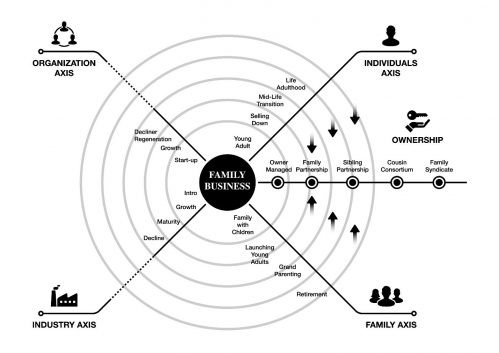Working as a System
You have answered yes to the question “Are You Including Family Members in the Family Office” structure, and no to the question “Do You Know What the Family Members Want”. Being on the same page is critical to all family members working together with the familiness advantage. You may need the assistance of an Family Enterprise Advisor to act as facilitator to get the family alignment you need.
In the Family Enterprise Advisor (FEA) training, FEAs are taught the many complexities and inter-relational dependencies, threats, and challenges of family continuity planning. For the novice, it can be very overwhelming, and that is why there is strong advantage to using a professional Family Enterprise Advisor to guide your family down this path.
One of the important principles FEAs learn is that one of the most effective methods to devise a successful continuity plan is to treat the family enterprise as a “system.” A system is defined as a network of independent components that work together to try to accomplish the aim of the system.
The world’s most prestigious watchmaker is undoubtedly Patek Philippe, whose timepieces can sell at auction in the millions. For those of you who have ever visited their lovely museum in Geneva, they exhibit some of their oldest and most exquisite timepieces, previously owned by Royalty and immensely powerful people over the centuries. Along with the timepieces, they have videos demonstrating the 3 dimensional internal mechanics of the individual parts all working together, and how the watchmakers designed each minute part by hand to fit together in the most remarkable way to create the integrated precision movement.
Just as precision timepieces must work as a system, so too must successful family enterprises work together like a system. And like any system, the designer must take a systematic approach to the architecture. Of course, a Family Enterprise involves people, and not inanimate parts. It makes for a much trickier engineering process, as people are all individual, can change over time, and have a limited lifespan.
The design of an effective system for family enterprise continuity planning requires an understanding of 5 key principles that can affect the planning process and outcome, some which we have already covered:
- Principal 1 – the whole is greater than the sum of the parts (i.e. synergy comes from working together)
- Principal 2 – organizations seek ‘homeostasis’ (i.e. if it ain’t broke, why fix it….the tendency to rest on laurels, as it is easier to stay the way we are, rather than risk making changes to be better)
- Principal 3 – patterns of behavior are predictable (i.e. stages of life bring with them certain attitudes…for example, young people are more inclined to want to make change, but when they age tend to prefer risk aversion)
- Principal 4 – every action creates a reaction (makes sense….reactions can particularly arise when made by family members who can get emotional, so meticulous planning is needed in communicating to take the right action to create the right reaction)
- Principal 5 – interfacing lifecycles imply constant change (this is by far one of the most important principles to recognize, as shown in the chart below).

There are many technical advisors that claim to be able to help families with their continuity planning. But the best family enterprise advisors are trained in the systematic model, work as a multi-disciplined team, and understand the critical dependencies and most effective techniques to achieve a systematic solution for the precise family fact pattern. And they also understand the softer issues and how the interpersonal issues need delicate respect at every step of the continuity pathway. The process is not easy at all, and requires a lot of time and effort. The most successful family enterprises understand it is something worth investing in early, using the services of experienced FEA professionals to help the family work together at their best.
Decision Tree Question: Engage an FEA Facilitator